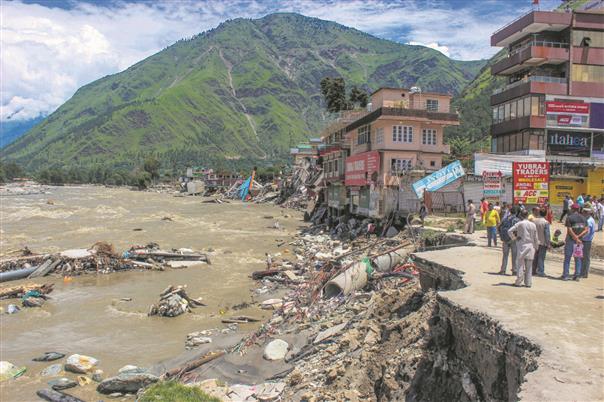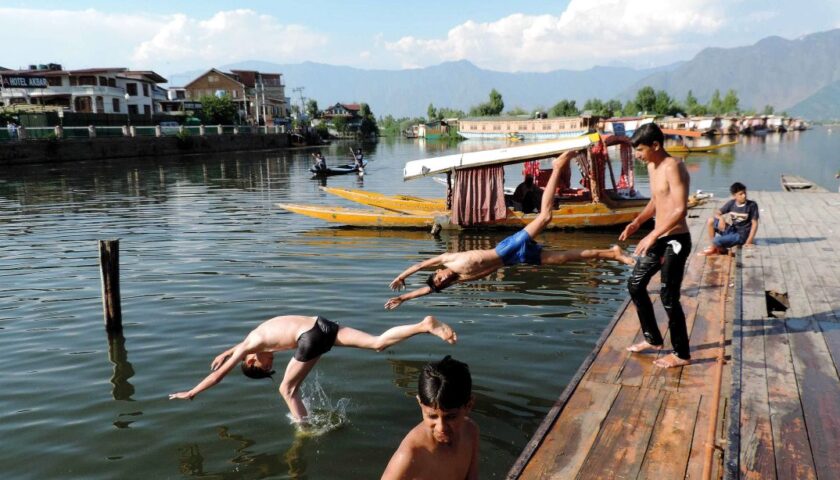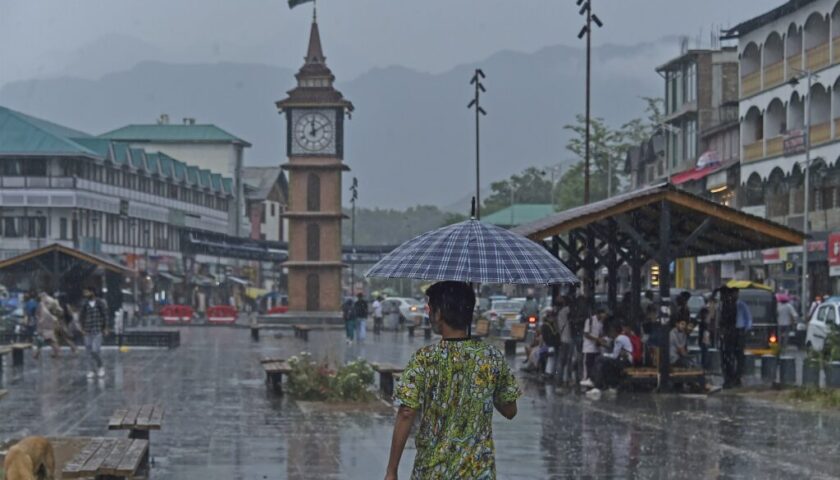In a distressing turn of events, the recent heavy rains in Himachal Pradesh have unveiled a pressing need for new and robust infrastructure policies in mountainous regions, as eight buildings in Kullu district collapsed due to the onslaught of rain-triggered damages. The incident occurred in the Anni area, casting large clouds of dust and debris, but thankfully, there were no casualties reported.
The buildings that crumbled had already exhibited cracks and were marked as unsafe following the recent bout of rains. These structures, which housed commercial establishments including shops and banks, were vacated in the days leading up to their collapse. The Sub Divisional Magistrate (SDM) of Anni, Naresh Verma, who was present at the scene, confirmed the situation.
Further evaluations of damage are underway, with additional unsafe structures along National Highway 305 in Anni being evacuated as a preventive measure. Although no lives were lost in this specific incident, the state of Himachal Pradesh has already mourned 120 rain-related fatalities this month alone. Since the onset of the monsoon on June 24, a staggering total of 238 people have lost their lives, with 40 others still missing.
Himachal Pradesh experienced three significant spells of heavy rains during this monsoon season. The first, on July 9 and 10, wreaked havoc on Mandi and Kullu districts. The second spell on August 14 and 15 struck Shimla and Solan districts, while Shimla city bore the brunt of heavy damage in the third spell on a fateful Tuesday night.
Chief Minister Sukhvinder Singh Sukhu, addressing the dire situation, stated that an amount of Rs 165.22 crore had been disbursed to deputy commissioners and line departments across the state to initiate restoration efforts for the inflicted damages. He underscored the colossal scale of the losses, pegging them at Rs 10,000 crore due to the relentless downpours.
Reflecting on the dire circumstances, one is reminded of the discourse at COP-24 in 2018. The world was projected to invest approximately $90 trillion in infrastructure over the ensuing decade or so, surpassing the current valuation. A glaring statistic surfaced—70-80% of India’s requisite infrastructure for 2030 remained unbuilt. Amidst these projections, the world was grappling with the impacts of climate change.
Now, in the wake of recent climate catastrophes plaguing mountainous states like Himachal Pradesh and Uttarakhand, these projections bear an eerie resonance with reality. The Union Territory of Ladakh, for instance, requires a complete overhaul of its housing infrastructure, as its existing dwellings cater to the cold desert climate with minimal rainfall. Pertinently, rain gauges were removed from the region in the 1950s, leaving Ladakh devoid of accurate rainfall data. The repercussions emerged in 2010 when cloud bursts triggered a disaster, and the region was caught unprepared due to the lack of essential information. Subsequently, annual rainfall has surged, causing flash floods.
In hindsight, while the Kedarnath disaster of 2013 stands out as a devastating human tragedy, this year’s calamity in the Kullu Valley of Himachal and Uttarakhand, though fewer in human casualties, has inflicted greater economic losses. The destruction of houses, infrastructure, and agricultural assets has exacerbated the need for a robust approach to climate resilience.
It’s an unequivocal moment to learn from these grim events and forge new policies to re-envision the development of mountainous regions before it’s too late. The imperative for change is clear, and the urgency to safeguard lives and resources cannot be overstated. As the mountainous states continue to grapple with the intensifying impacts of climate change, the time to act is now, lest we find ourselves in the midst of irreversible consequences.






